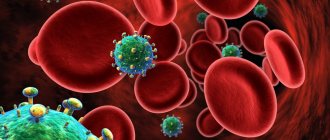Lethargy is understood as a pathological symptom, which is often a sign of physiological or psychiatric pathology. Signs of inhibition are:
- the patient's reactions are reduced;
- speech is drawn out;
- thoughts flow slowly;
- movements are slow.
Sometimes a person, without realizing it, ignores everything that happens in the world around him, being in a stuporous state for a long time. If the patient’s thinking is severely impaired, we are talking about ideational inhibition, and in case of speech disorders, doctors talk about a motor type of pathology.
general characteristics
Retardation is a slowness of mental and physiological processes.
In the scientific community, the terms “bradypsychism” and “bradypsychia” are used to denote it. The most typical external signs are slow reactions, protracted speech, inability to engage in joint activities or communication that proceed at a normal pace. Inhibited people often remain alone, seem unsociable, withdrawn for no reason. The most severe variants of the disorder are observed with apathy and stupor, when patients do not respond to anything. There are three types of inhibition: ideational, motor and complex. The symptom is called ideatorial when slowness is most pronounced in speech and thinking. People show moderate or slightly weakened motor activity, but when trying to carry on a conversation, inhibition occurs - they do not have time to follow the progress of the conversation, track the change in topic, or answer the questions posed. Others get the impression that the thought process and speaking take a lot of energy from a person.
Motor retardation is manifested to a greater extent by slowing down movements. It is characterized by physical weakness, relaxed posture, and incoordination. People constantly feel the desire to lean on something stable, sit down or lie down. The decrease in speech rate is mild; communication difficulties arise only when conducting an intellectually complex or emotional conversation. With complex retardation, the mental and motor spheres suffer: patients speak quietly, with long pauses, move slowly or remain practically motionless.
Types of speech pathologies
Different types of dysfunction of impressive and expressive speech are classified depending on the clinical picture of the disease. Among the most common violations are:
- Dislalia. It manifests itself in problems with the pronunciation of sounds, while the patient’s articulatory apparatus, hearing, and intellect remain intact.
- Tahilalia. The patient speaks very quickly, while swallowing sounds, and makes inappropriate hesitations in sentences. This speech disorder in adults is often a sign of mental retardation, epilepsy and other mental disorders.
- Aphonia. People speak in a whisper and are unable to pronounce sounds loudly due to stress or pathology of the larynx.
- Stuttering. The rhythm and pace of speech is disrupted, the person cannot pronounce individual words without hesitation. Among the reasons are severe fear and hereditary predisposition.
- Dysarthria. There is a distorted pronunciation of sounds, as well as disturbances in speech motor skills. The problem arises due to improper functioning of the articulatory apparatus or brain damage due to stroke, cerebral palsy, multiple sclerosis.
- Alalia. Speech function is not developed and may occur after a traumatic brain injury or due to congenital autism.
- Rhinolalia. The patient suffers from incorrect pronunciation of sounds due to the abnormal structure of the speech apparatus (physical trauma to the palate, “cleft lip,” “cleft palate”).
Not all patients are sent to the psychiatric department for hospitalization; some pathologies can be successfully treated at home. It is important to follow all doctor's recommendations.
Causes of lethargy
Many people are familiar with the condition when usual tasks seem overwhelming, there is a constant feeling of lack of time. Such mild periodic lethargy has physiological causes, for example, lack of sleep. It is short-lived and disappears on its own after proper rest. Less commonly, slowness of psychomotor reactions is pathological and develops as a symptom of a mental disorder, neurological disease or intoxication of the body. In such cases, people remain inhibited, regardless of fatigue, and require special treatment.
Physiological conditions
The reasons for a person’s slowness are the peculiarities of the functioning of his nervous system and situational factors, for example, leading to asthenia or reducing motivational and volitional abilities. Physiological factors of inhibition act constantly or periodically, but do not cause social and personal disadaptation: the person continues to lead his usual lifestyle, adjusting it to his slowness. Possible reasons of this type:
- Lack of sleep.
The body is unable to adapt to sleep deficiency. Its deficiency at night (for example, during insomnia) is always compensated for during the day by the development of drowsiness, absent-mindedness, and slowness. At the physiological level, inhibition processes in the brain predominate. After a sleepless night, lethargy occurs during the day, regardless of where the person is or what tasks he is solving. - Fatigue.
Slow reactions, weakness, and drowsiness are caused by the body’s need for rest. When reserves of mental and physical energy are depleted, the body turns on “saving mode.” Reducing the pace of all types of activity helps to waste the remaining strength more slowly. After a period of rest, the usual speed is restored. If this does not happen, chronic fatigue syndrome may develop. - Stress.
The reaction to stress is determined by the characteristics of nervous activity and can develop according to the type of inhibition or hyperactivity. Some people, in response to stress, become more active and restless, others show passivity and uncertainty. The second response option is called “rabbit stress” and is characterized by sudden disorganization and slowdown in activity. - Difficulty of the task.
The causes of selective inhibition are lack of skills, lack of knowledge to perform a specific activity. A person completes a task slowly or is completely inactive when the task is complex and incomprehensible. For example, a student at the blackboard looks sluggish because he missed the previous lesson or did not do his homework. - Reluctance to perform activities.
The speed of thinking decreases when it is necessary to perform a task that is subjectively assessed as uninteresting, insignificant, or meaningless. Achieving the final result is possible only through the application of volitional efforts, but they are not always enough. As a result, a person procrastinates, gets distracted, and puts off work for the future. - Phlegmatic temperament.
Congenital causes of slowness are the predominance of inhibition and inertia of the nervous system. People with such characteristics are called phlegmatic. They may seem inhibited, especially for those in whom excitation of the central nervous system dominates, and the speed of all processes is high. - Features of education.
Slowness, the predominance of inhibited personality traits may be the result of upbringing in a family with a measured, strict daily routine, and the lack of opportunity to demonstrate independence. In both cases, the child grows up dependent on his parents, unable to adapt to changing environmental conditions. Finding himself in an unfamiliar situation, he becomes confused, indecisive, and slow.
Somatic and mental illnesses
The implementation of mental operations and complex motor acts is ensured by the work of different parts of the brain. With organic and biochemical changes in the central nervous system, persistent severe lethargy may develop, regardless of lack of sleep, fatigue or situational reasons. It requires treatment; in combination with other symptoms of the disease, it disrupts a person’s social adaptation - it interferes with professional activities, and limits the ability to communicate with relatives and friends. The most common causes of pathological retardation:
- Vascular diseases of the brain.
Acute and chronic disorders of cerebral circulation lead to deterioration in the nutrition of brain cells and hypoxia. This negatively affects the speed of intellectual functions and focus of attention. Slowness and absent-mindedness are most typical for patients with atherosclerosis, hypertension, and vascular thrombosis. - Parkinson's disease.
One of the key symptoms of the disease is hypokinesia - a decrease in spontaneous physical activity. Patients can remain motionless for hours, their movements are constrained, unfold only after a pause, and are slow. Characterized by walking in small steps, a mask-like face, viscosity of thinking, and confusion of speech. - Epilepsy.
A decrease in the rate of mental processes occurs with an increase in epileptic dementia. The thinking of epileptics is viscous, stiff, and concrete. Speech is often impoverished and slow, but accelerated speech production with a large number of stereotypical repetitions and patterns is possible. Retardation manifests itself more in the intellectual sphere. - Schizophrenia.
Bradypsychia in schizophrenia is formed on the basis of emotional-volitional disturbances and poverty of motives. Patients are uninitiative and behave distantly. A slowdown in thinking is accompanied by a decrease in the speed of motor-speech activity and difficulties in verbalizing thoughts. Secondary causes of inhibition are intellectual defect, productive schizophrenic symptoms (delusions, hallucinations). - Depression.
Motor and mental retardation are included in the classic triad of symptoms of endogenous depression, but can also manifest themselves in other depressive disorders. In mild forms of the disease, lethargy, slowness, and stiffness of movements are observed. Severe depression can occur with stupor, mutism, and inability to respond to external stimuli. - Anxiety disorders.
With a high level of anxiety, a state of psychomotor retardation occurs. Patients pronounce each word with effort, as if overcoming an obstacle. The reasons are emotional overstrain, stiffness of thinking, concentration of attention on a disturbing situation. - Hypothyroidism.
Insufficiency of thyroid hormones reduces the rate of metabolic processes in the central nervous system. On the basis of this, a change occurs in the emotional sphere and cognitive abilities. Patients experience lethargy, apathy, and depression. They become slow, hypochondriac, and whiny. They perceive new information worse and remember it poorly.
Intoxication
Toxic poisoning of the body develops due to parasitic diseases, consumption of alcohol, drugs and medications. In most cases, there is a disturbance in the exchange of neurotransmitters in the central nervous system, which leads to a change in the speed of biochemical reactions and neural transmissions, which is manifested by an acceleration or deceleration of the pace of mental activity, inadequacy of emotions and behavior. Lethargy appears when the following substances enter the body:
- Opioids.
Mild intoxication has mild symptoms. With moderate poisoning, a person becomes complacent, sedentary, and lethargic. Due to the influx of dream-like fantasies, maintaining a conversation is difficult. Speech is quiet and unintelligible. Autonomic symptoms: constriction of the pupils, pale skin, dry mucous membranes, low blood pressure. - Sedatives, hypnotics.
Intoxication with these drugs is characterized by lethargy, drowsiness, and incoordination of movements. There is often instability of emotions with rapid transitions from laughter to crying. With mild poisoning, the mood rises, a feeling of joy develops, which is gradually replaced by anger and tearfulness. The average degree of intoxication is always accompanied by a slowdown in thinking, speech, and movements. - Cannabinoids.
The state of deranged intoxication occurs with a pathological change in the direction of thinking: it becomes illogical, inconsistent, incoherent. The pace is often accelerated, but sometimes pathological inhibition develops, which is manifested by a feeling of “freezing of thoughts”, an inability to comprehend what is happening. At the same time, the mood remains high. - Parasite toxins.
With chronic parasitic infestations, the nervous system is exposed to small doses of toxic substances for a long time. Poisoning develops, the main symptoms of which include fatigue, a feeling of overwork, and insomnia. Pediatric patients are often diagnosed with anemia; they look drowsy, apathetic, and lethargic.
What to do if an alcoholic becomes inhibited
There may be several options - give him time to come to his senses or start acting. The first is suitable if the addict has no predisposition to mental disorders and the inhibition is caused by the medications used. You need to act if negative symptoms persist for a long time and gradually progress.
Doctors often prescribe to inhibited patients:
- Nootropics. These are drugs that improve brain activity.
- Vitamin and mineral compositions. Eliminate deficiency of vitamins and minerals, increase immunity and support the body during the recovery period.
- Amino acids. They play an important role in metabolic processes. Helps normalize the activity of internal organs.
- Sleeping pills. Used if a person has suffered from insomnia for a long time. Then, in order to restore the normal functioning of the central nervous system, he must get enough sleep.
It is unacceptable to give an alcoholic alcohol to cheer him up. This measure is a road to nowhere. On the contrary, you should completely eliminate drinking and code yourself.
Excellent results with lethargy and loss of interest in what is happening around you can be achieved with the help of psychotherapy sessions. During them, the doctor teaches the patient to enjoy life without additional stimulation. But for therapy to be successful, a person must sincerely want to get better.
Diagnostics
Lethargy, fatigue, and weakness are common reasons for people turning to a neurologist. Less often, the initial examination is carried out by a therapist or psychiatrist. First, a clinical interview of the patient, observation and examination is carried out. In order to objectively confirm the presence of inhibition, a pathopsychological examination and psychophysiological tests are performed to determine the reaction rate. To clarify the diagnosis, instrumental studies of the brain and its vessels and blood tests for hormone levels may be prescribed. The standard diagnostic complex includes:
- Clinical conversation.
When interviewed, patients complain of slowness, memory impairment, and decreased intellectual abilities. They say that they have become worse able to cope with professional responsibilities and everyday affairs, and are unable to carry on a conversation. Possible additional symptoms are drowsiness, headaches, confusion. Children show moodiness, tearfulness for no particular reason, and lack of interest in games. - Observation.
When answering a doctor, patients often pause and drawl out their words. The voice is quiet, they speak unintelligibly, the question is answered after silence, so it may seem that auditory perception is impaired or it is difficult to understand the meaning of what was said. They are slow and passive in behavior. The movements are awkward and forced. - Study of thinking.
Pathopsychological tests are carried out to assess the speed of the thought process: an associative experiment, selection of antonym words, and others. The results indicate a slowdown in the pace of cognitive functions, a decrease in the number of ideas, and “getting stuck” on one thought. Intellectual activity is characterized by inertia and inactivity. - Determination of reaction rate.
When diagnosing retardation, psychophysiological methods are used that measure the reaction time to a stimulus (sound, light) and parallel changes in the bioelectrical activity of the brain, heart rate, and respiratory rate. With inhibition, a significant increase in the time of simple visual-motor and auditory-motor reactions, depression of the alpha rhythm on the EEG, and slowing of breathing are detected.
Diagnosis of schizophrenia
The Internet is full of rapid tests to determine the level of susceptibility to schizophrenic disorders. With their help, you can independently assess the degree of risk of developing the disease. But even if the test showed a tendency towards schizophrenia, it still doesn’t mean anything: it’s just a way of self-testing mental stability. Based on its results, a diagnosis is not made, but they are often the impetus for further examination.
From a medical point of view, identifying schizophrenia, especially in the early stages, is very difficult. The difficulties lie in the impossibility of using additional equipment or taking tests when diagnosing. Methods such as:
- X-ray;
- MRI;
- ICT;
- blood, urine, etc. indicators
Diagnosis of schizophrenia involves the use of an intuitive approach in the work of a psychiatrist. Its use is due to the inability to understand, explain or feel the patient’s condition. Building any logical chains between symptoms and their consequences in this case is of little use.
Modern diagnostic algorithms are based on methods developed at the beginning of the twentieth century. They are not at all outdated and are relevant to this day. Even in the presence of obvious schizophrenic symptoms, during the initial examination only a preliminary diagnosis of psychosis can be made. Schizophrenia is determined only after a certain period of observation of the patient.
The experience of a specialist, the ability to observe the patient and highlight the main thing from his stories are very important. Relatives can provide a lot of useful information that influences the correct diagnosis. Recently, neurotests have been successfully used. With their help, you can not only diagnose the disorder, but also determine the degree of its severity.
Treatment
The methods of primary therapy depend on the cause that provoked the inhibition. As part of the treatment program, various methods are used: drug correction, psychotherapy, targeted stimulation of intellectual functions and motor activity. All activities are aimed at restoring physiological brain processes responsible for the dynamics of psychomotor activity, as well as training mental and physical skills.
Taking medications
Drug therapy is prescribed to most patients and is aimed at improving the metabolism of nerve cells and tissues, protecting them from damaging factors, and slowing down death. Restoring active blood supply improves the functioning of various parts of the brain. As a result, mental activity is activated and symptoms of inhibition are reduced. Patients are advised to take neuroprotectors and nootropics.
Psychotherapy and psychocorrection
Psychocorrectional classes are aimed at increasing the speed of cognitive functions. They include exercises such as selection of associations, generalization of concepts, analysis of logical sequences, and solving intellectual problems. The correctness of the results and the speed of completing tasks are taken into account. During psychotherapeutic sessions, methods of social adaptation of a person with inhibition are mastered. The specialist gives recommendations on choosing a professional field, helps to master behavioral and speech skills that compensate for slowness.
Similarities with other mental disorders
Different mental illnesses often have similar symptoms. So how not to confuse schizophrenia with other mental disorders? Only a doctor can do this. Self-medication only aggravates the situation and leads to the rapid development of the disease.
Each of these diseases, such as depression, multiple personality disorder or psychosis, can develop as an independent pathology or indicate the initial stage of schizophrenia. Their symptoms are similar:
- causeless feeling of guilt;
- dejected mood;
- attributing to oneself non-existent problems or successes;
- reluctance to communicate with people;
- problems with personal hygiene;
- suicide attempts.
Only an experienced specialist will be able to find differences in these mental disorders, especially since at an early stage of development, schizophrenia has practically no obvious signs.
Delirium (hallucinations)
This syndrome means that the patient may experience various kinds of hallucinations - deceptions of the senses and perception. For example, a person may hear voices that are not there or see something that does not exist. At the same time, the patient is completely confident that everything is happening for real, and cannot distinguish reality from illusion. In this regard, the patient may experience severe behavioral deviations. They can manifest themselves in both positive and negative emotions, depending on the nature of the hallucinations.
For this reason, the patient can be dangerous both to himself and to others and society in the broad sense of the word. When “returning to reality,” the memory of hallucinations is preserved, but the memory of reality is most often not. This symptom often manifests itself in severe poisoning and infectious diseases.
Twilight stupefaction
Twilight stupefaction is considered one of the most specific symptoms in medicine in general. It is characterized by complete loss of memory for the period of morning and evening (twilight). The patient's ability to navigate in space is severely impaired, severe hallucinations are possible, which the patient is afraid of, as well as incoherent speech and muttering. Fortunately, this symptom is quite rare and is not accompanied by a complete loss of consciousness (unlike, for example, epilepsy).
A characteristic feature of mental confusion in somatic diseases is that some of the memories are erased. The darknesses themselves are short-lived and proceed dynamically, often moving from one to another and to a normal state.
How to live on
People suffering from schizophrenia are seriously ill, and it is not their fault. They did not choose this disease - it chose them itself. Those suffering from this mental disorder experience incredible suffering. This may continue for a long period. If a person does not turn to a specialist, and, accordingly, does not receive qualified help, then his instinct of self-preservation is dulled. This often leads to suicide.
Modern medicine makes it possible, if not to cure schizophrenia, to significantly improve the quality of life. The disease is quite unpredictable, so it is not possible to calculate the period of remission. But for people whose life is a constant struggle between reality and illusion, even a month of quality life is already a considerable period of time.
Psychotherapy methods for patients with schizophrenia differ from methods of treating other diseases. Here, long-term treatment or a lasting positive result cannot be guaranteed, but there is a need for it as long as at least the slightest piece of personality is present in the psyche.
We know that genius almost always borders on madness. Almost every outstanding person is a little schizophrenic, but not everyone suffering from schizophrenia is a genius. And earlier, and even more so, now research is being conducted on the condition of people with mental disorders. It has already been proven that their perception of the world and attitude towards creativity is different from others.
This is confirmed by descriptions of the lives of some great scientists, artists, writers, and cultural figures. I. Smoktunovsky, N. Gogol, S. Yesenin, I. Newton, Salvador Dali, Vincent Van Gogh, E. Hemingway, F. Nietzsche, John Nash, Lewis Carroll - this is not a complete list of talented people who literally made a revolution in the area where all their forces were directed. However, each of them has one unifying feature - schizophrenia. It manifested itself differently for everyone, and this is what probably prompted them to create masterpieces.
The same individuals may be among us. For every thousand people living on our planet, there are 10 schizophrenics. This is quite an impressive number of people, but current treatment methods allow the vast majority of them to remain full-fledged members of society.










